January 11, 2020
5 min read
Based in Virginia Beach, VA, filmmaker Kyle Head is a role model for indie filmmakers outside of Los Angeles and New York in balancing both creative and commercial projects. We first profiled him last year for his work on Goldilocks, an innovative sci-fi short that was one of the standout films of the EVA1 “Share Your Vision” contest. Since then, Head has kept busy with a number of documentaries and branding videos with his production company, Nomad Media. He recently picked up a Panasonic LUMIX S1 full-frame mirrorless camera to shoot alongside his AU-EVA1 Super 35 handheld cinema camera.
Head is shooting a project for Oasis, a food bank in Portsmouth, VA, in which he has partnered with RocketBike, a digital marketing agency. With added B-roll to shoot on the project, Head decided to employ his S1 on a DJI Ronin S with a 24-70mm and his EVA1 primarily on sticks with a longer lens.
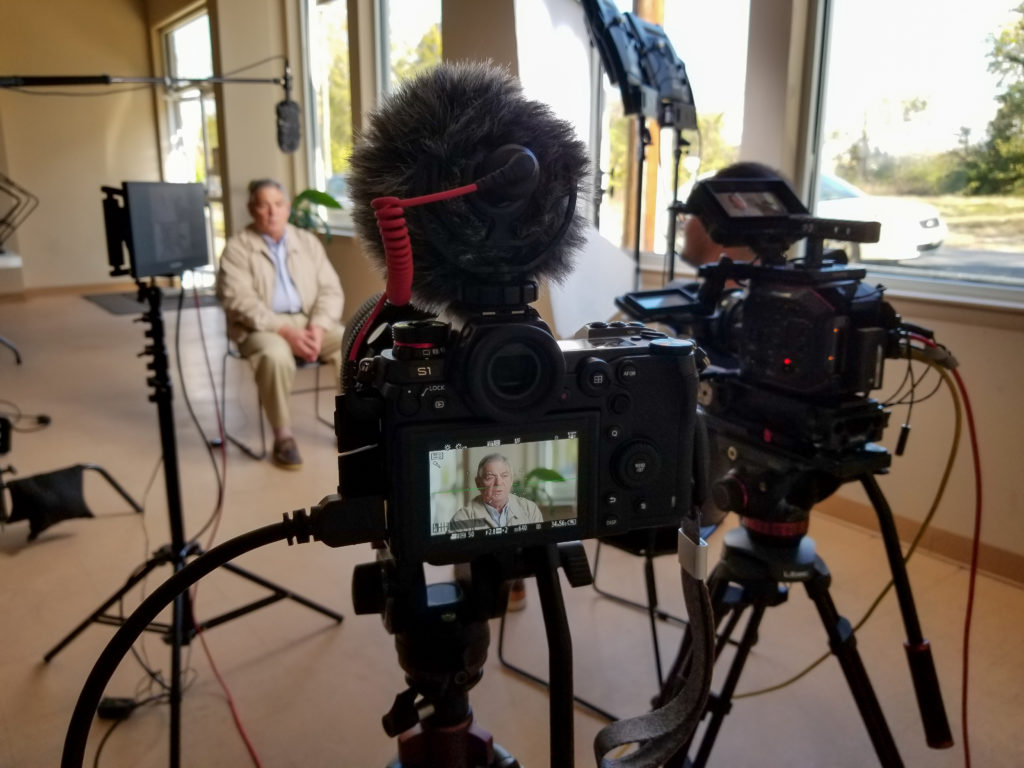
LUMIX S1 and AU-EVA1 are set up to shoot an interview side-by-side
The first time he shot with the S1, Head was impressed with the camera’s compact form factor and solid feel. “I haven't been much of a photographer in my career and this camera has let me explore still photography more,” reveals Head. “I did some Astrophotography over the summer, which is the first time I’ve been able to do that with a low light camera. I got the S1 solely as a B-camera to my EVA1 but there are projects that are more B-roll based and having a smaller camera with similar colors and image stabilization makes perfect sense.”
For the interviews, Head will shoot his master with the EVA1 as a wide master and use the S1 as a side view tighter profile shot – both in V-Log. “The cameras match up perfectly,” says Head. “I'm not a colorist by any means so I usually use the [Panasonic] Nicest 709 LUT. I’ve handed the LUT off to editors at agencies and they’ve been thrilled with it. For this project, I've been changing the way I do color because we've been in a lot of mixed light situations that we can't control.”
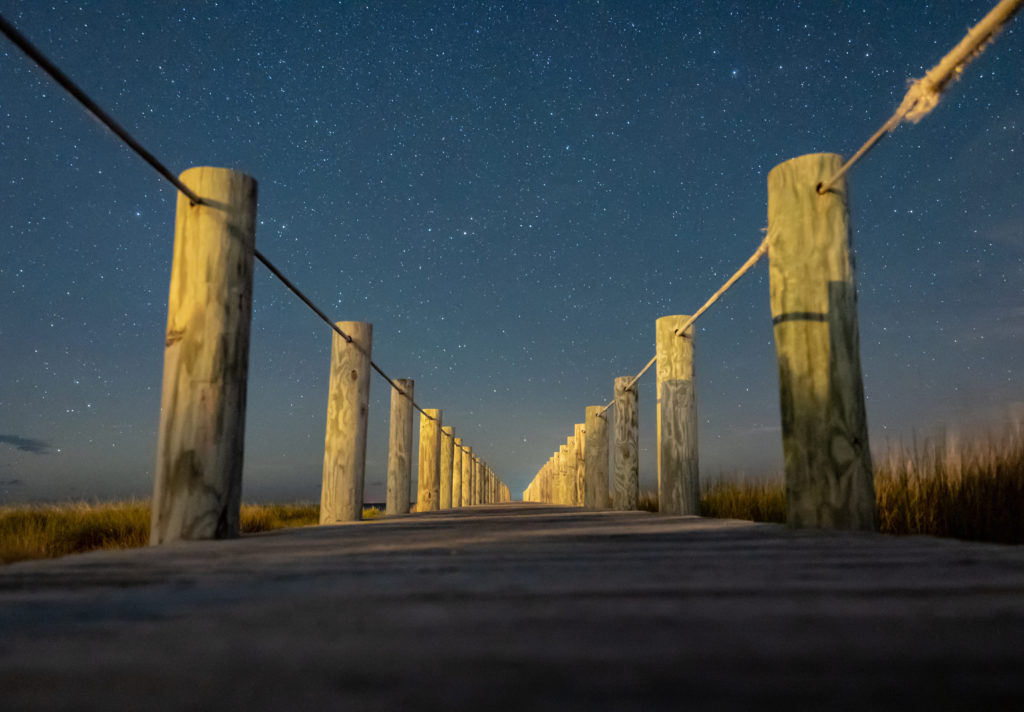
Although he's works as a filmmaker and cinematographer, the S1 has allowed Head to shoot some low light astrophotography.
Color Consistency
To get his EVA1 and S1 to match, Head has employed a Datacolor SCK200 SpyderCHECKR 24 that he uses on set with DaVinci Resolve for each interview setup. “I’ve done side-by-sides with the LUT and color chart and both cameras still match up perfectly," reveals Head. "The one big thing is that the SpyderCHECKR will take out some ugly fluorescent light that we couldn’t turn off and will take it out of the image. I’m really happy with the look of the dual camera interviews we’ve done so far.”
Head and his gaffer will place the SpyderCHECKR in front of the camera and rotate it around to make sure it’s not reflecting light on the SpyderCHECKR'S squares. When he brings it into Resolve, he’s able to put a SpyderCHECKR square around the chart, line everything up, and Resolve automatically gives him a great starter grade from his V-Log files. “For the most part, I go and do some luminance corrections but the colors have been great going this route,” says Head. “It started out as a backup plan just in case there’s some color that we would have trouble pulling out later. The place we’re currently shooting in, you could look at the bulbs and see that the colors were different. We used the SpyderCHECKR for our main interviews and as a starter setup, we just pop it in, shoot it, and we’re good to go.”
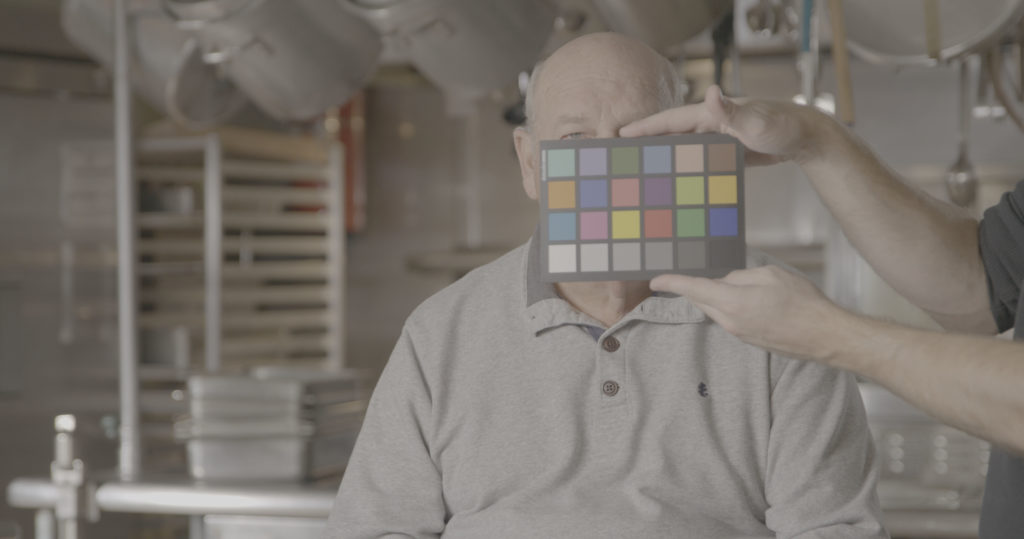
V-Log frame with Datacolor SCK200 SpyderCHECKR
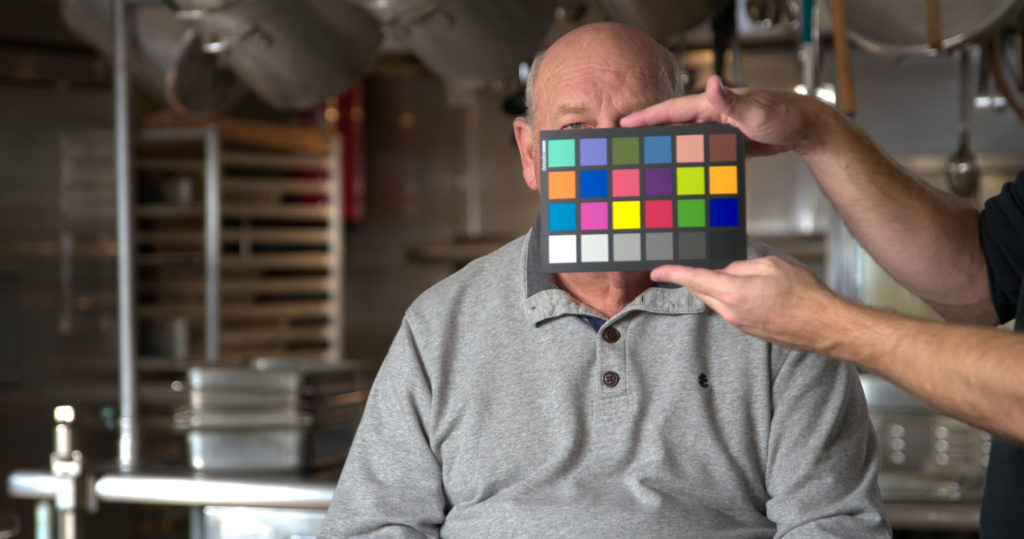
Graded in DaVinci Resolve
For his S1, Head uses a Sigma MC-21 lens adapter (EF-mount to L-mount) for his Sigma EF-mount zoom lenses, including a 14-24mm, 24-70mm Art lenses, as well as a 70-200mm Sports lens. “I would love to get some native L-mount lenses,” reveals Head. “The EF ones have been great, but for photography, it would improve AF a little and to get continuous AF would be nice. It’s definitely not a deal breaker though.”
Working with Super 35 and Full-Frame Sensors
For Head, the major difference in working with full-frame and Super 35 sensors is the roughly 1.5x crop factor. “I had to sell a few lenses that I had for the EVA1 to get glass that covered full-frame,” he explains. “I like to be able to live on a 24-70mm because it covers a wide range and on the S1, I can still go out to 24, which is wide enough for most of the things that I shoot. Putting it on the EVA1, we have to deal a little with the crop factor, which will sometimes mean a lens change.”
For post, Head edits in Adobe Premiere Pro CC and exports the cut into Resolve for final color. If he’s working with a client, he’ll throw the Nicest 709 LUT on and pull it back 70-80%.
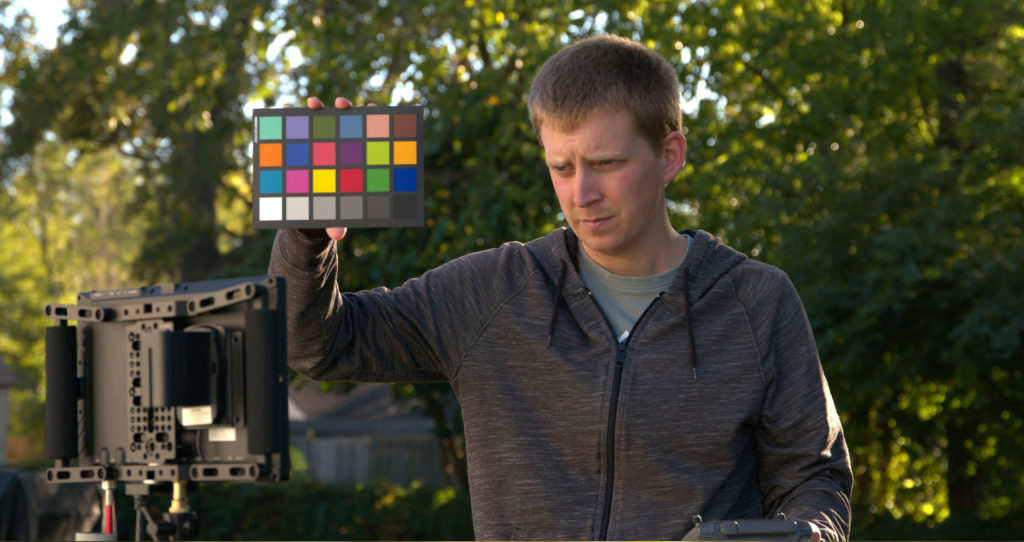
Kyle Head checks the frame on his monitor while setting up a shot.
As of now, Head has been mainly using the S1 for B-roll shots but he’s looking at the DMW-XLR1 XLR microphone adapter to transform his S1 into a lightweight run-and-gun A-camera. Although he currently records dual system audio on a Zoom recorder, he would love to do a full shoot on the S1, especially when the shoot requires travel. “It's nice just having to carry that one camera out,” explains Head. “There are some opportunities where I won’t need the whole EVA1 kit and I can just have the S1. That’s also what’s making me consider the S1H.”
For more information on the AU-EVA1, visit here.
Download the Nicest 709 LUT - part of the free VariCam LUT Library.
To learn more about the LUMIX S1, click through here.
Also, visit Nomad Media’s website.
![]()
